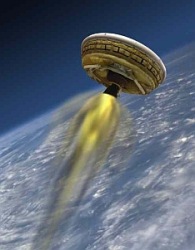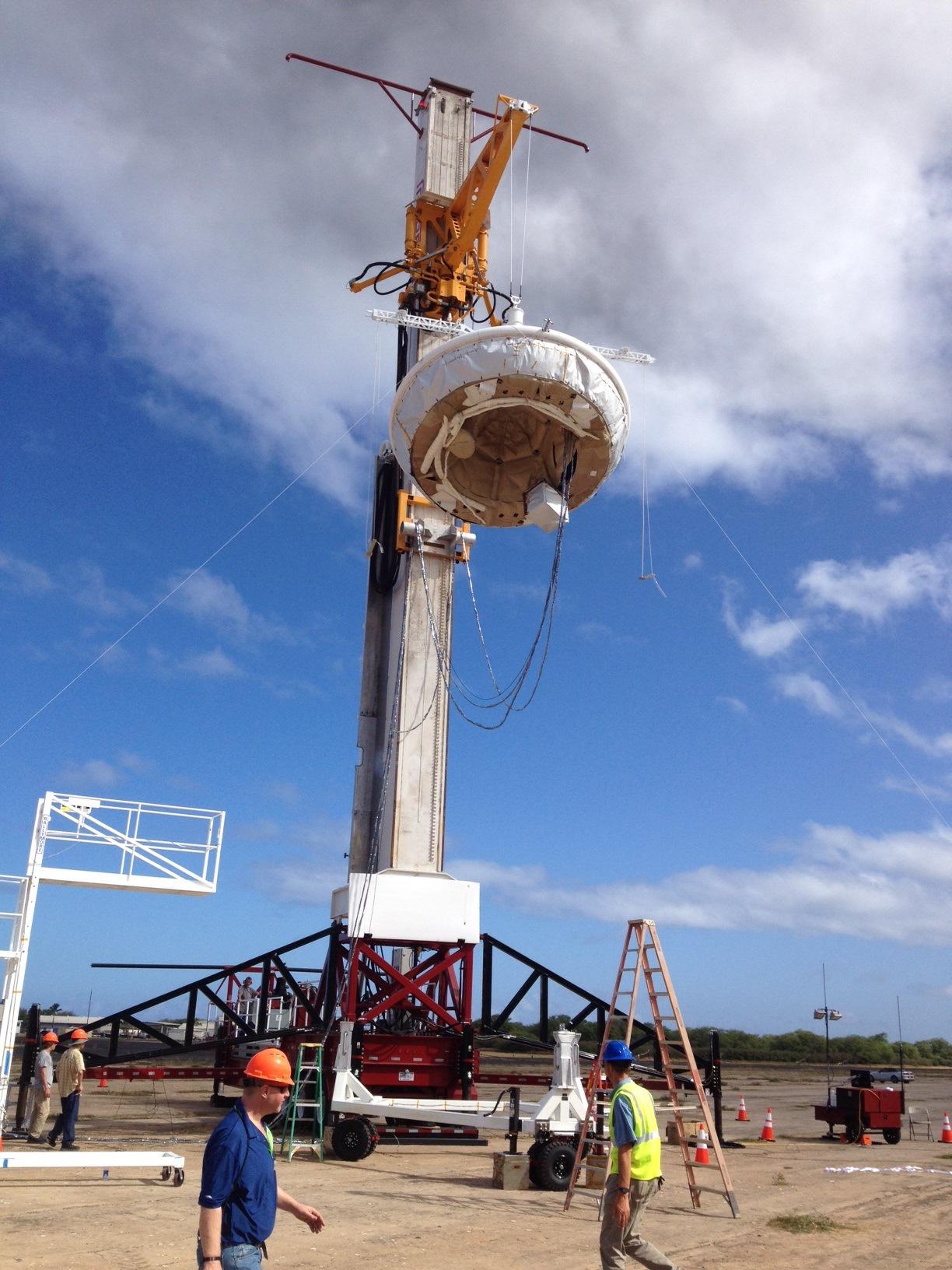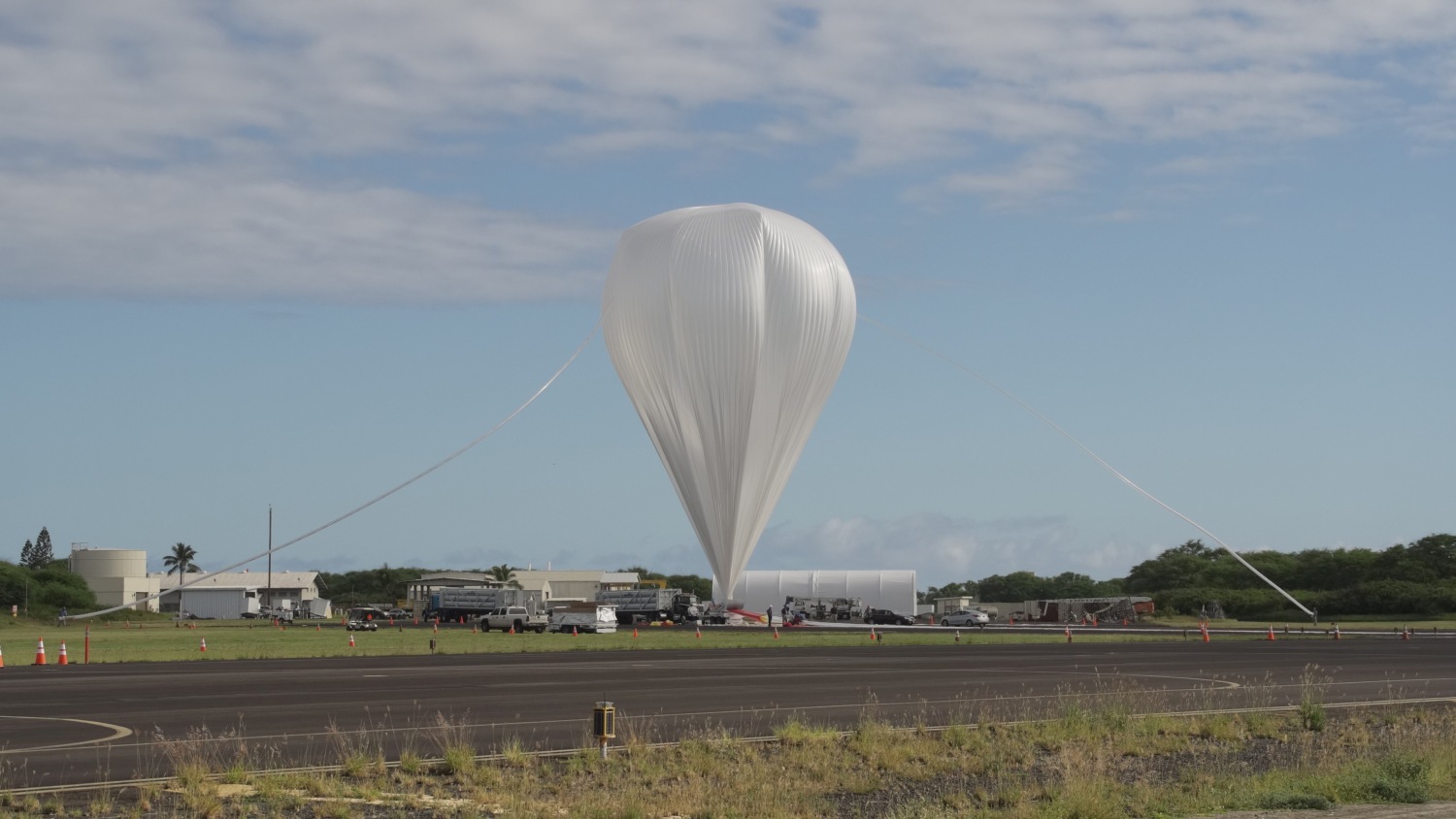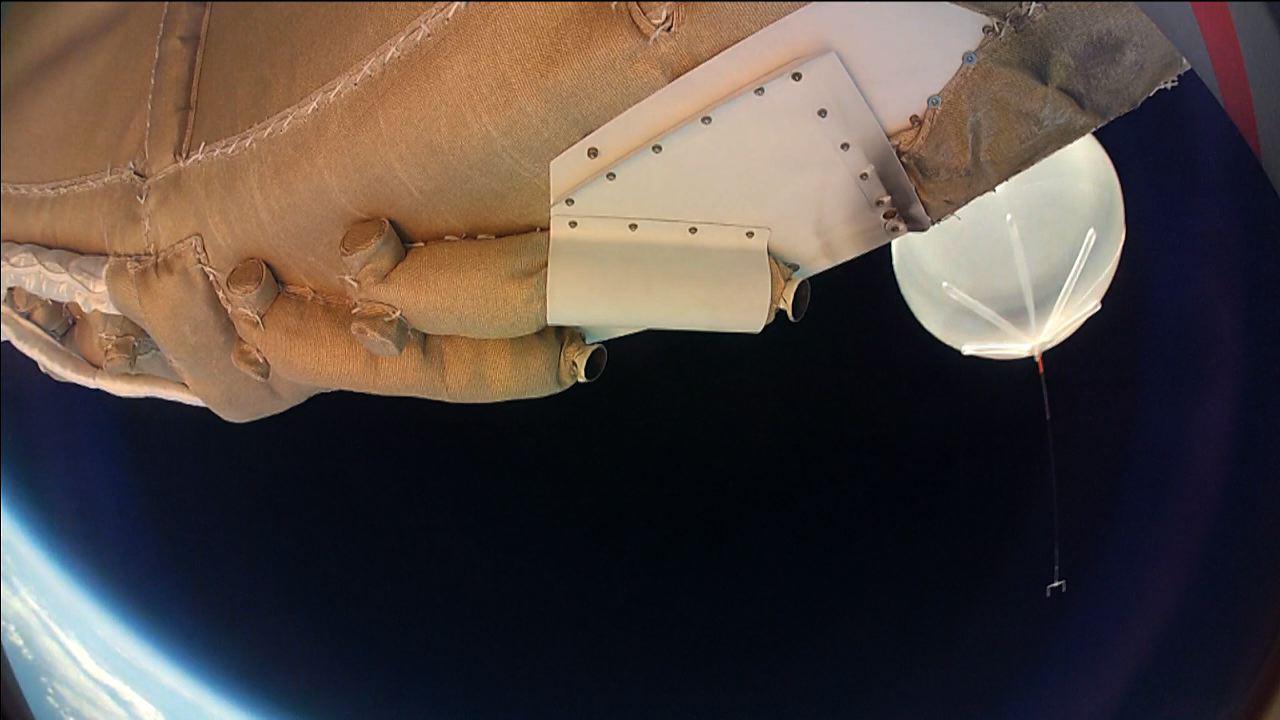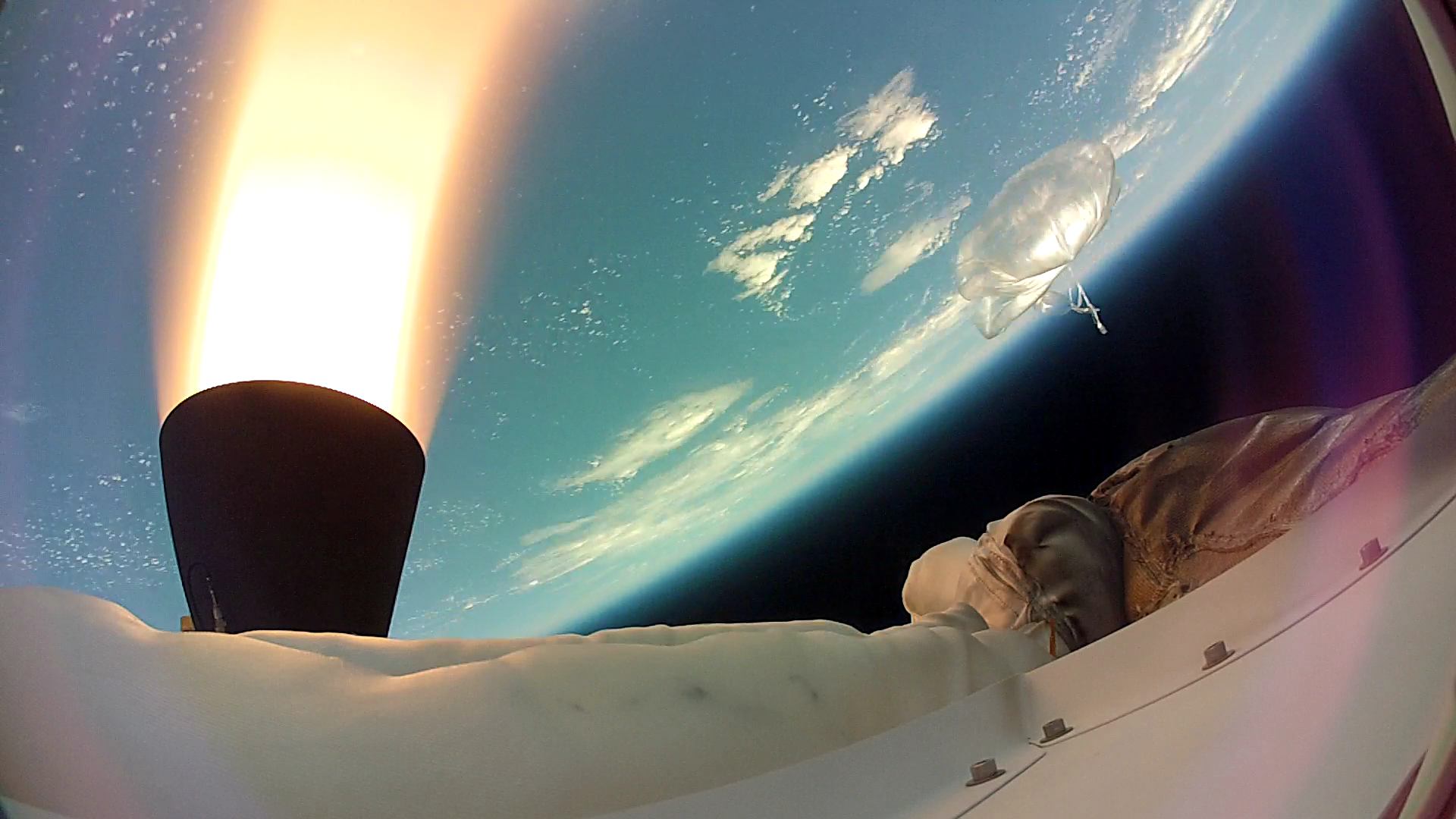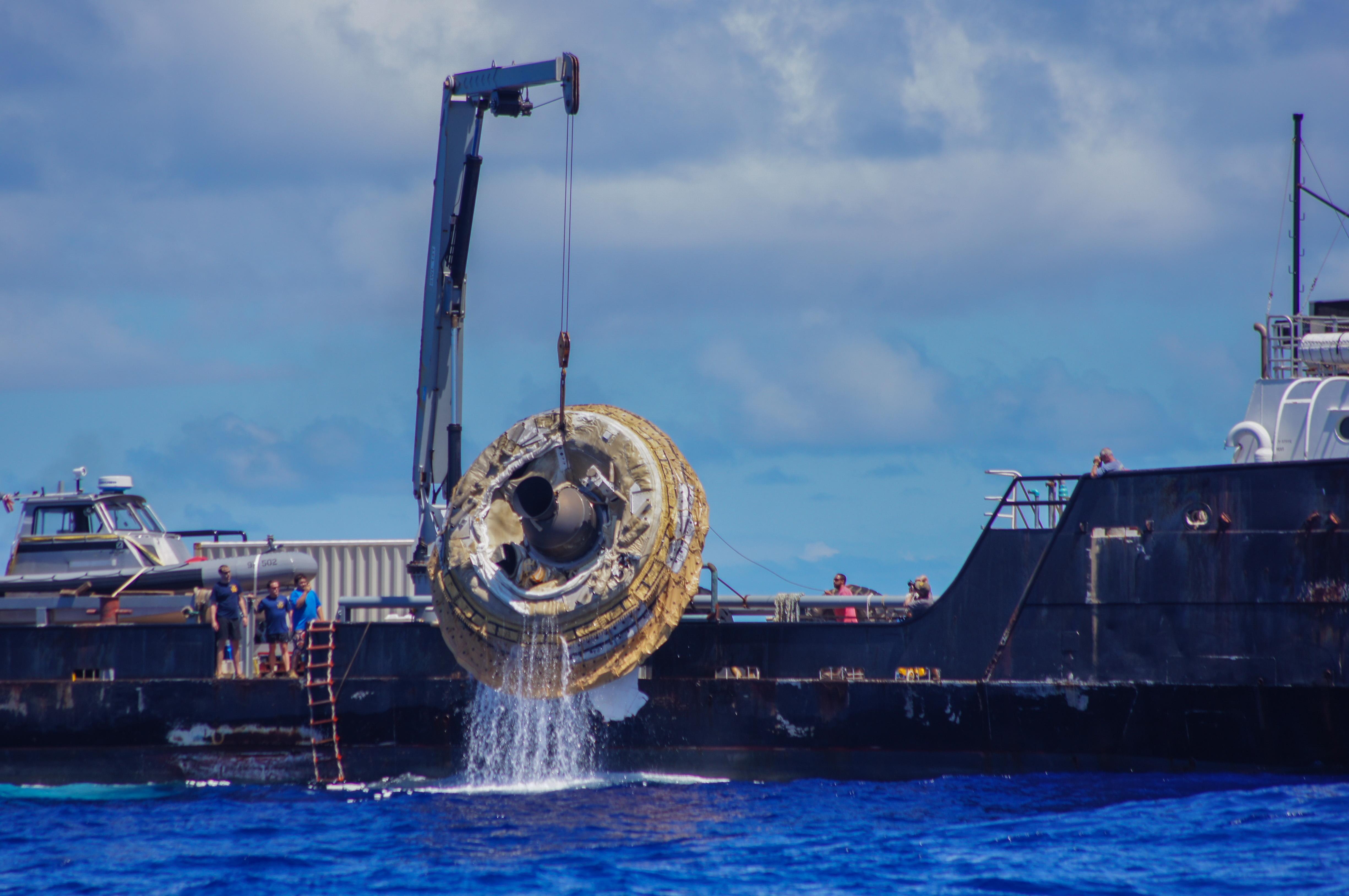Purpose of the flight and payload description
The Low-Density Supersonic Decelerator (LDSD) program, managed by NASA, aimed to advance technologies for landing heavier payloads on Mars. This was achieved by testing a series of supersonic decelerator systems under atmospheric conditions resembling those on Mars. The program employed a combination of high-altitude balloon launches, rocket propulsion, and supersonic reentry tests.
The LDSD test vehicle which can be seen in the image at left (click to enlarge) was a sophisticated engineering design tailored for atmospheric deceleration testing under supersonic conditions. It included a combination of elements to simulate and validate entry, descent, and landing systems for Mars-like environments. The core of the vehicle integrated advanced deceleration technologies, such as Supersonic Inflatable Aerodynamic Decelerators (SIADs) and a large ringsail parachute, which were pivotal in slowing the vehicle during supersonic speeds.
The vehicle's design accommodated a Star 48 solid rocket motor that provided the thrust necessary to propel it to altitudes of approximately 50 km and velocities up to Mach 4 after being released from the high-altitude balloon. A robust spin-up mechanism stabilized the vehicle before ignition, minimizing dynamic disturbances during the ascent and ensuring trajectory accuracy. The aerodynamic design incorporated stabilizers and a shape optimized for supersonic and subsonic performance.
An inertial measurement unit (IMU) onboard the test vehicle measured dynamic rates and orientation, which was crucial for understanding vehicle behavior under varied atmospheric conditions. This system synchronized with other sensors and diagnostic tools to collect high-fidelity data throughout the flight.
The vehicle's configuration allowed it to be suspended from a zero-pressure balloon during the ascent phase, forming a pendulum-like system. This setup required precise calibration of hang angles and minimized pendulum motion, which could have affected the deployment sequence of the decelerators. At float altitude, approximately 36 km, the dynamic conditions stabilized, providing optimal deployment circumstances.
The exterior of the vehicle included integration points for the SIAD and parachute systems. The SIAD, an inflatable toroidal structure, surrounded the main body and deployed during descent to increase drag and slow the vehicle. The ringsail parachute followed, offering a secondary deceleration stage and enabling safe recovery.
After the test phases, the vehicle, along with its components, descended into the ocean for retrieval. This recovery facilitated comprehensive post-flight analysis, validating system performance and providing insights for future designs aimed at supporting Mars exploration missions.
Video of the launch operations, flight and parachute deployment
Details of the balloon flight
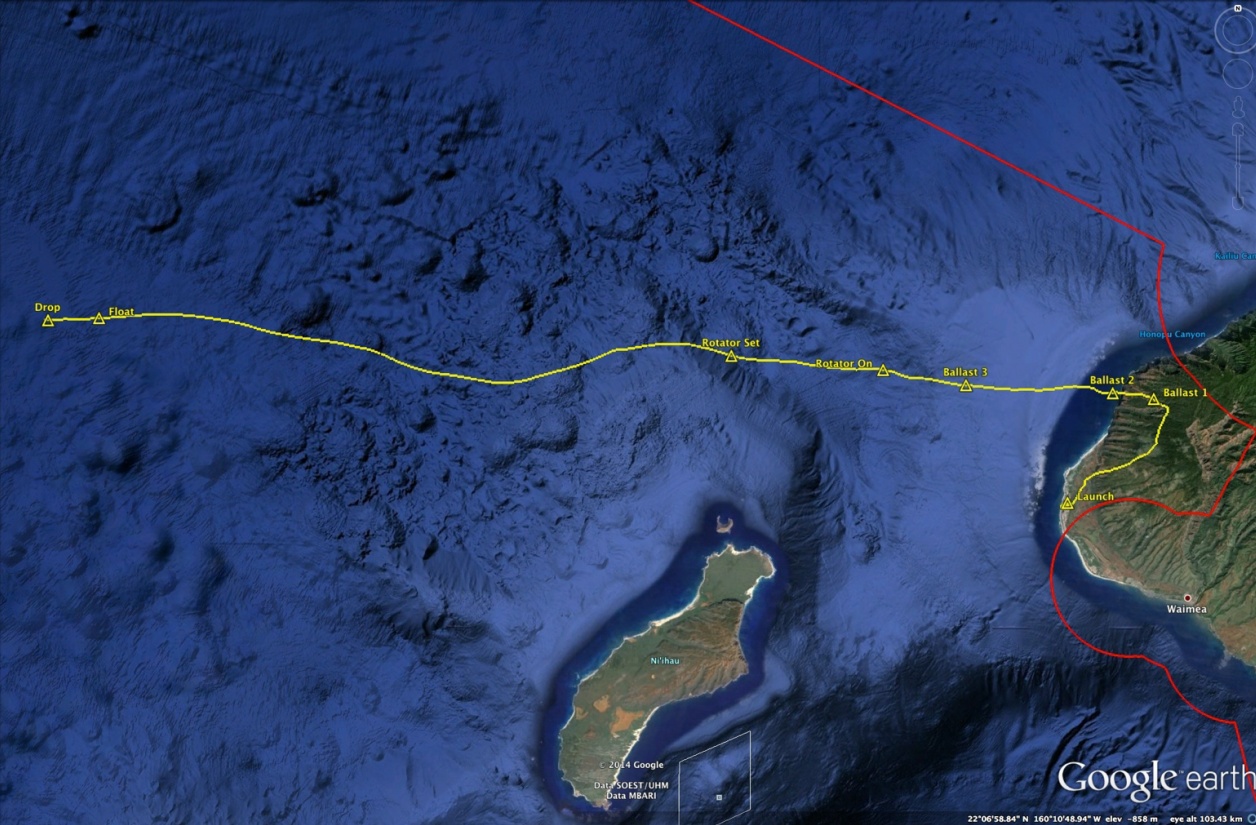
Balloon launched on: 6/28/2014 at 18:47 utc
Launch site: Pacific Missile Range Facility, Barking Sands, Kauai, Hawaii, US
Balloon launched by: Columbia Scientific Balloon Facility (CSBF)
Balloon manufacturer/size/composition: Zero Pressure Balloon Raven Aerostar - 39.570.000 cuft
Flight identification number: 648NT
End of flight (L for landing time, W for last contact, otherwise termination time): 6/28/2014 at 21:05 utc
Balloon flight duration (F: time at float only, otherwise total flight time in d:days / h:hours or m:minutes - ): 2 h 20 m
Landing site: Over the Pacific Ocean, W of Kauai at coordinates 22º 11' N - 160º 42' W
The first balloon flight for the Low-Density Supersonic Decelerator (LDSD) project took place on June 28, 2014, at the Pacific Missile Range Facility (PMRF) in Kauai, Hawaii. The balloon was launched from a stationary tower rather than a mobile launch vehicle due to the specific requirements of the payload, site constraints and security procedures that prevented the presence of any human operator near a live rocket-powered vehicle. The launch setup required precise alignment with prevailing wind conditions, which were analyzed in detail through two separate wind studies conducted in 2012 and 2013. These studies identified predictable mesoscale weather patterns influenced by local geography and trade winds, providing critical data for planning the launch.
The balloon was successfully released at 18:40 UTC, with its ascent closely monitored and managed using CSBF's SINBAD (Scientific Balloon Analysis Model) simulation tool. Adjustments to the balloon's trajectory were made in real-time using ballast drops, ensuring it remained within predefined flight corridors while avoiding restricted zones such as populated areas and marine reserves. The ascent phase saw the balloon reach a float altitude of approximately 36 km, where atmospheric density measurements were validated against preflight predictions. This stable float condition, essential for test vehicle release, was achieved through carefully calibrated helium venting to mitigate oscillations caused by free lift helium. Once stabilized, the test vehicle's inertial measurement unit (IMU) was activated to dampen residual motion and initialize its trajectory.
The test vehicle was droped from the balloon and transitioned into its own descent trajectory for the primary experiment involving supersonic decelerators. While the test vehicle proceeded as planned, the balloon experienced a rapid ascent due to the loss of payload weight. Approximately 10 seconds after the drop, the balloon burst, likely due to the pressure differential between the helium interior and the thinning atmosphere, causing it to collapse and fall into the ocean. Both the vehicle and the balloon were later recovered.
This flight provided critical data on the performance of the balloon system, the behavior of the test vehicle under realistic conditions, and the success of new predictive and diagnostic tools. The results laid the groundwork for refining the technologies to be used in subsequent flights and future Mars missions.
External references
- Low-Density Supersonic Decelerator NASA website
- A Balloon's Job Well Done: LDSD in Flight NASA Mars Exploration Program
- Aerodynamic Models for the Low Density Supersonic Decelerator (LDSD) Test Vehicles 2016 AIAA Aviation Conference
- Development of a new large balloon launch technique for the low density supersonic decelerator project 40th COSPAR Scientific Assembly. Held 2-10 August 2014, in Moscow, Russia
- LDSD balloon launch campaign in Hawaii, completed full coverage of the flight at Stratocat
- The first balloon flight of the Low Density Supersonic Decelerator technology demonstration mission 2015 IEEE Aerospace Conference
- The First Balloon Flight of the Low Density Supersonic Decelerator Technology Demonstration Mission 2015 IEEE Aerospace Conference
12539If you consider this website interesting or useful, you can help me to keep it up and running with a small donation to cover the operational costs. Just the equivalent of the price of a cup of coffee helps a lot.

